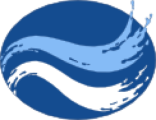TMDL (Total Maximum Daily Load)
As described by the Wisconsin DNR, "A TMDL (Total Maximum Daily Load) is the amount of a pollutant a waterbody can receive and still meet water quality standards". Section 303(d) of the Federal Clean Water Act requires states to develop TMDLs for impaired waters. TMDLs have been established for both the Lower and Upper Fox Wolf Basins that cover Winnebago County. The LWCD is working closely with the DNR to address TMDLs in both rural agricultural and urban stormwater areas through education and practices that reduce pollutant loading in water.
MS4 (Municipal Separate Storm Sewer System)
Winnebago County is required per NR 216 Wis. Adm Code to have a Municipal Separate Storm Sewer System (MS4) permit for its urbanized areas. A "MS4" is defined as a conveyance or system of conveyances including roads with drainage systems, municipal streets, catch basins, curbs, gutters, ditches, constructed channels or storm drains.
The Winnebago County Highway Department holds the MS4 Permit and the Land & Water Conservation Department (LWCD) administers and manages the permit requirements on its behalf. Each permit cycle lasts 5 years and permit compliance is periodically evaluated by the Wisconsin DNR. Winnebago County was most recently audited by the DNR in 2022. The result of that audit included several minor procedural and programming recommendations that the County will be implementing in 2023 and 2024. The LWCD conducts annual monitoring, mapping, and reporting for the MS4 permit and is a member of the Northeast Wisconsin Stormwater Consortium.
A major part of the Winnebago County MS4 Permit program includes public education and outreach to engage and educate residents about the importance of reducing pollutants entering the stormwater system. Some examples include classroom activities with students, local and regional watershed cleanups, rain barrel workshops and social media postings.
Winnebago County General Code includes an Illicit Discharge and Elimination ordinance to enforce compliance to eliminate illegal discharges in the system. We also inspect the system annually as part of a monitoring program.
